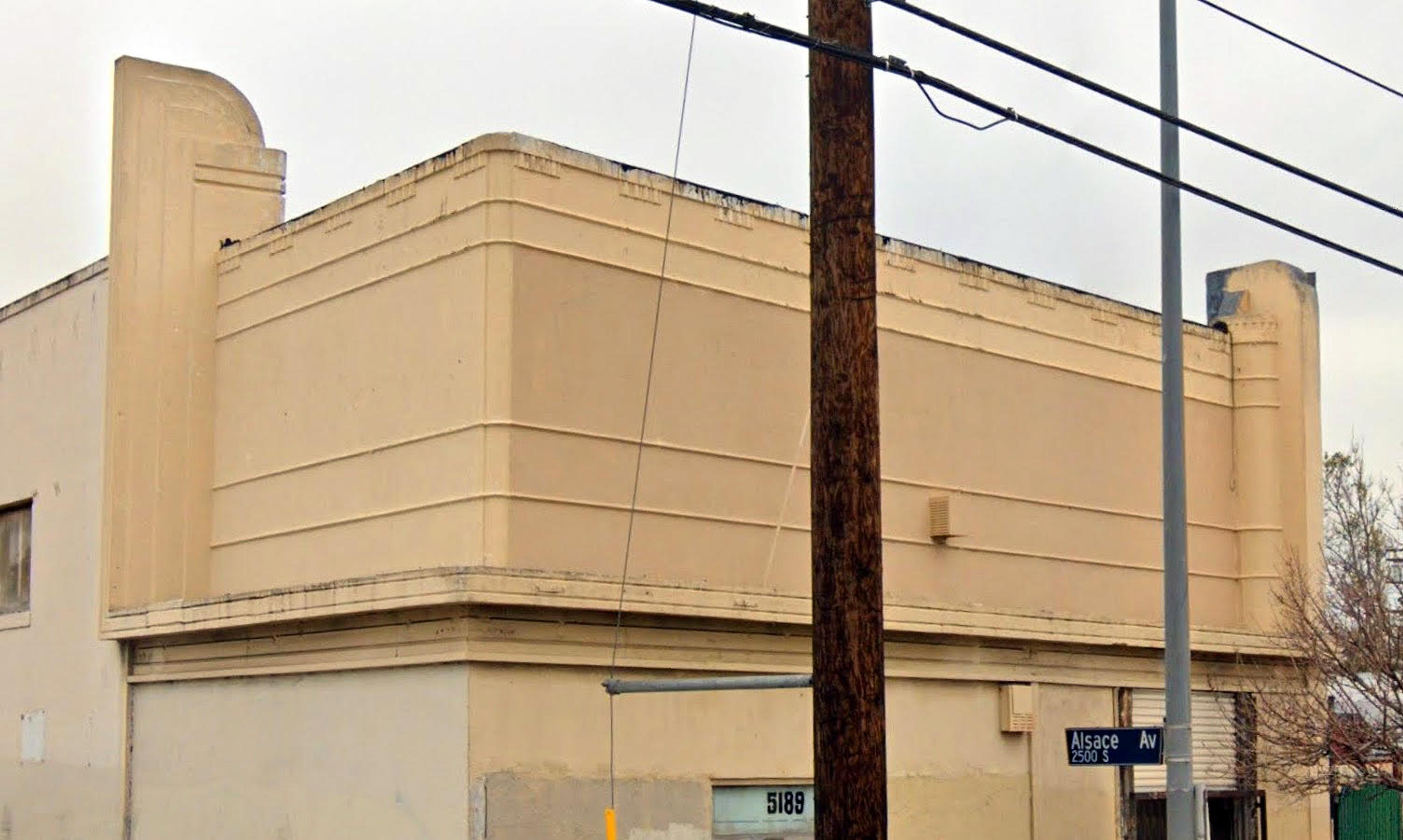When you think of the area around West Adams Boulevard, as it rolls through Baldwin Hills, you might muse on all the vast Victorian homes that are being chewed up and spit out of late, should they be anywhere near that street called West Adams.
But I want to direct you to something else, that being some of the Art Deco structures which until very recently dotted the landscape. I mean, someone needs to record what this city used to look like. As in, once upon a time, you'd be driving around and see some cool old Art Deco building and say "hey, that's neat."
Soon, you won't be bothered with such diversions.
For example where once you'd soak up the details of that wee store building on Adams & Alsace—
—designed by Weber & Nelson and built in 1937, thankfully, you no longer have to take in such meddlesome beauties as you drive back to your pod, citizen.
While we're on the subject, this nifty little 1928 S. H. Kress store across the intersection, designed by Emil J. T. Hoffman (in-house architect for Kress)—
—was recently demolished, and in its place shall rise a six-story 25-unit box; two of those 25 units are deed-restricted low income, so it's therefore taller and denser than anything else in the neighborhood. With the exception of that thing across the intersection.
So no, I'm not kidding when I say you will soon be spared the indignity of seeing any of the "Modernistic" interbellum structures which once helped define our fair city.
Today's post, by the way, is just a Art Deco-y preview of the 1939 bowling alley that just had its demolition permits pulled...that post I'm putting off till the weekend, since I'm still at work trying to find a vintage image of the place. Come back for that!
About Nathan Marsak
NATHAN MARSAK says: “I came to praise Los Angeles, not to bury her. And yet developers, City Hall and social reformers work in concert to effect wholesale demolition, removing the human scale of my town, tossing its charm into a landfill. The least I can do is memorialize in real time those places worth noting, as they slide inexorably into memory. In college I studied under Banham. I learned to love Los Angeles via Reyner’s teachings (and came to abjure Mike Davis and his lurid, fanciful, laughably-researched assertions). In grad school I focused on visionary urbanism and technological utopianism—so while some may find the premise of preserving communities so much ill-considered reactionary twaddle, at least I have a background in the other side. Anyway, I moved to Los Angeles, and began to document. I drove about shooting neon signs. I put endless miles across the Plains of Id on the old Packard as part of the 1947project; when Kim Cooper blogged about some bad lunch meat in Compton, I drove down to there to check on the scene of the crime (never via freeway—you can’t really learn Los Angeles unless you study her from the surface streets). But in short order one landmark after another disappeared. Few demolitions are as contentious or high profile as the Ambassador or Parker Center; rather, it is all the little houses and commercial buildings the social engineers are desperate to destroy in the name of the Greater Good. The fabric of our city is woven together by communities and neighborhoods who no longer have a say in their zoning or planning so it’s important to shine a light on these vanishing treasures, now, before the remarkable character of our city is wiped away like a stain from a countertop. (But Nathan, you say, it’s just this one house—no, it isn’t. Principiis obsta, finem respice.) And who knows, one might even be saved. Excelsior!””
Nathan’s blogs are: Bunker Hill Los Angeles, RIP Los Angeles & On Bunker Hill.
